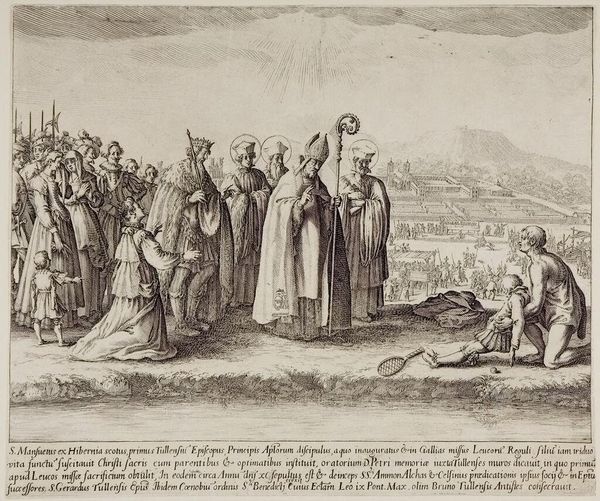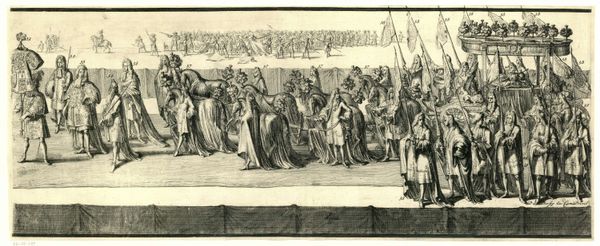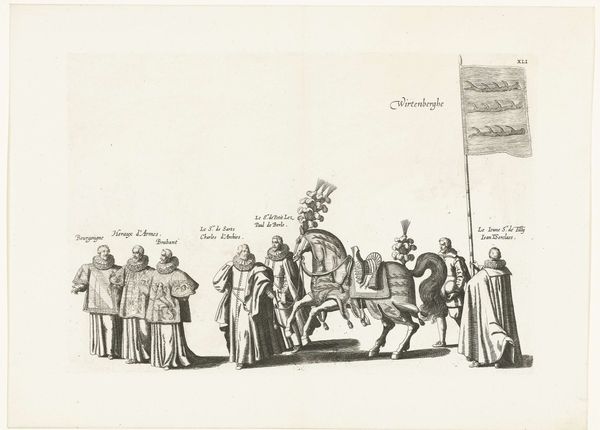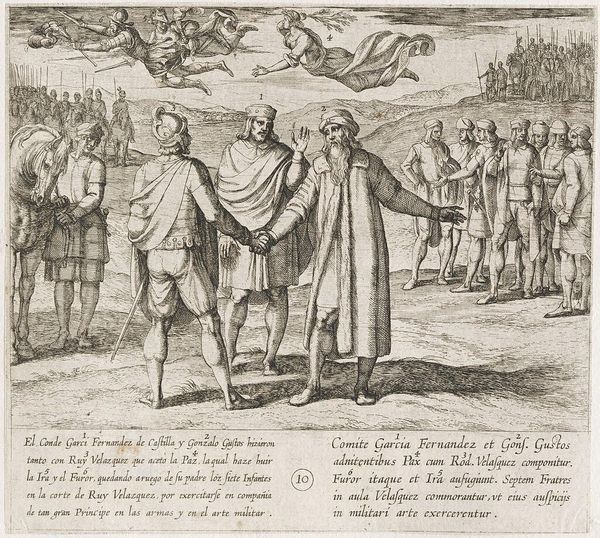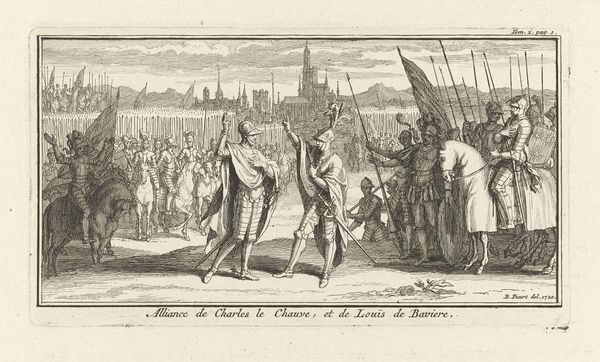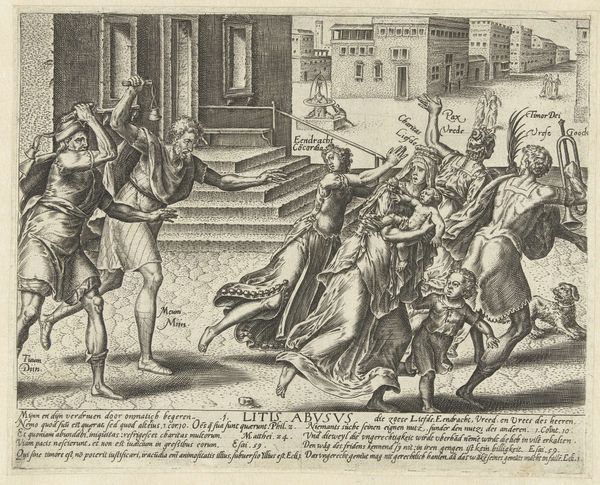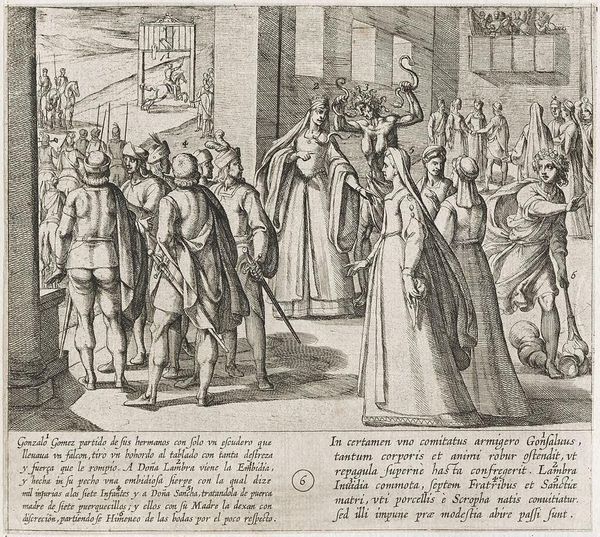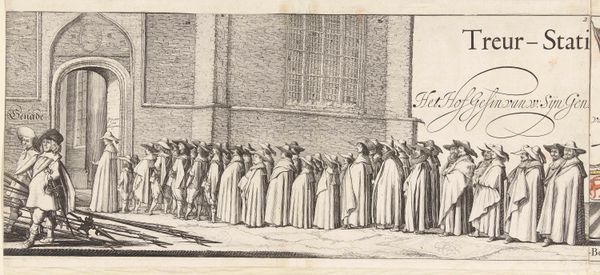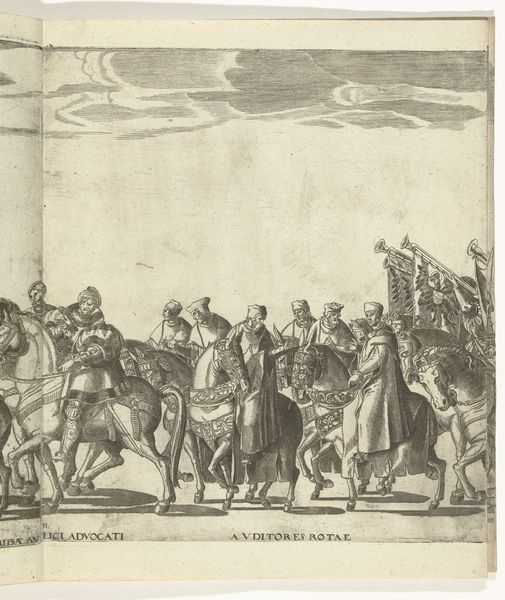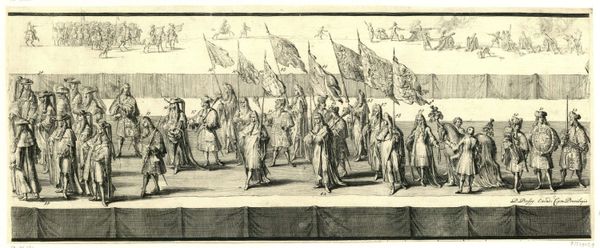
print, engraving
#
dutch-golden-age
# print
#
figuration
#
line
#
cityscape
#
history-painting
#
engraving
Dimensions: height 206 mm, width 543 mm
Copyright: Rijks Museum: Open Domain
Editor: So, this is "De begrafenisstoet van Frederik Hendrik (plaat nr. 1)", or "The funeral procession of Frederik Hendrik (plate no. 1)," a print from 1651 by Pieter Nolpe. It’s somber, of course, depicting this long, unwavering procession. It’s all in stark black and white, etched with such precision. It almost feels… static. What catches your eye when you look at it? Curator: You know, it's the unwavering stillness that gets to me as well. The linear precision lends it an almost dreamlike quality, don’t you think? It’s a carefully staged performance, this public grief. The artist uses line to flatten the perspective but heighten the impact. I almost hear the hushed footfalls of the mourners. Nolpe emphasizes the gate, almost like a stage curtain—what do you imagine is being set for our stage, dear Editor? Editor: That's interesting - like we are witnessing a historic stage play. I do see that flattening of perspective you mentioned – it emphasizes the endless nature of the procession. Did the Dutch Golden Age artists often use events like funerals to show the political mood? Curator: Indeed! State funerals, Editor, like theatrical events! Not so different from today's carefully planned displays of emotion and authority, really, are they? This particular event showcased the power, solemnity, and continuity of the House of Orange. It's a visual reminder of dynastic power – grief as political tool, maybe? But look closer at the people. What are they showing? Editor: Not much really – stoicism mostly! It's almost oppressive! The order and uniformity now make me feel that the artist's style mirrors society, or at least the projection of society that they want to be perceived as! Curator: You nailed it! That mirroring is potent, isn't it? It is propaganda but, ah, perhaps exquisite propaganda. So tell me, dear friend, what do we learn, gazing at this carefully constructed scene from so long ago? Editor: It feels like a reflection on the deliberate construction of memory and power...how both public and private emotions can be turned into enduring art. Curator: Precisely! Art – not just a mirror, but also a shaper, bending reflection and history into something entirely new. Thank you, Editor, a perfect ending.
Comments
No comments
Be the first to comment and join the conversation on the ultimate creative platform.
